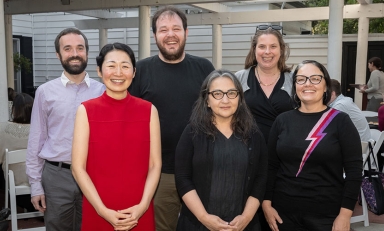
Students in Assistant Professor Sabrina Stierwalt’s Physics 162 class are headed out of this world by way of virtual reality headsets this fall.
Students taking Physics 162 ordinarily take a field trip to the Griffith Observatory, but Stierwalt didn’t want COVID-19 closures to prevent an opportunity to explore the galaxy. Her previous work at NASA’s outpost at Caltech offered a way for the class—designed primarily for non-physics majors—to view solar systems outside of our own. At Caltech, Stierwalt helped to develop VR content that highlights the discoveries being made through NASA's missions.
“One of those VR experiences was a tour of the exoplanet star system called TRAPPIST1, which is one of the stellar systems we know the most about (outside of our own, of course),” Stierwalt says.
This isn’t the first time virtual reality has been used as part of Stierwalt’s classes.
“Last year I started working with the Center for Digital Liberal Arts to develop lesson plans incorporating VR. In the past, my students have gone to the library to borrow the VR headsets available there. We had made a lot of progress and I didn't want to give it up just because we were remote.”
So Stierwalt sought another solution. Investigating local VR headset suppliers, she came across Knox Labs. After explaining the remote learning situation, and finding an Oxy connection at the lab—”The person I connected with had a family member go to Oxy!”—she was offered a great discount, making it possible to supply students in the class with Google’s cardboard VR headsets, which are used with smartphones. Stierwalt worked in collaboration with members of the physics department to package the headsets and Oxy’s postal center to label them all.
Students will be exploring planets outside of our solar system to understand what we can know about planets and other stars (and how we know them), what makes a planet habitable, and how differing conditions like time and temperature affect the evolution of life on other planets.



